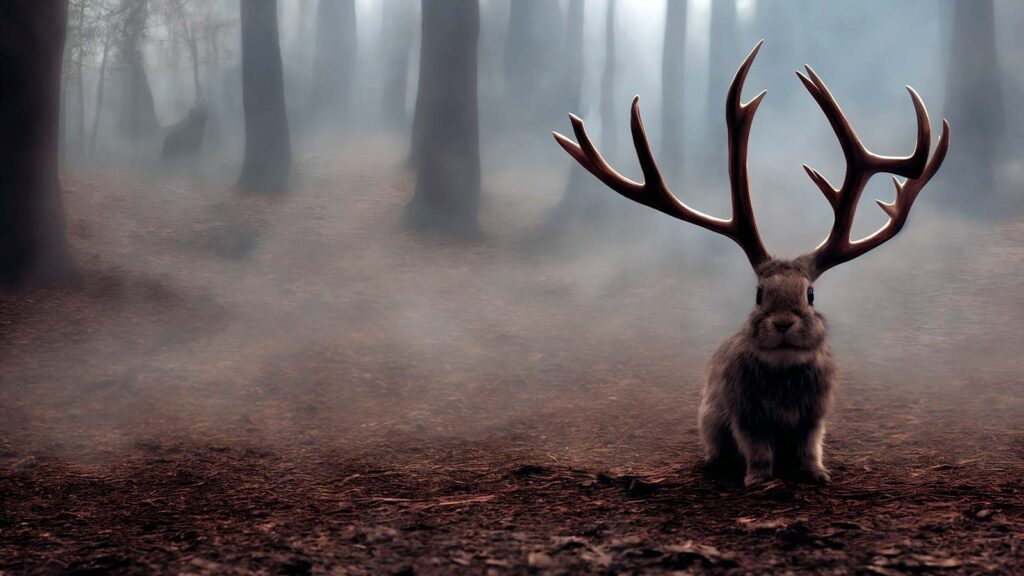Wyoming is a very large state, land-wise, but is the least populous people-wise in the United States. It has many fascinating geographical structures and a long history of Native American habitation there. As might be expected from a place like this, Wyoming has a lot of unique and weird folklore associated with it. Here are some of the highlights of the state’s legends.
Admitted to the union in 1890 as the 44th state, Wyoming is the tenth largest state by geographical area, while being the least populous one. The area has been home to several Native American groups over thousands of years, including such tribes as the Arapaho, Crow, Shoshone, and Lakota. The area was first explored by Europeans in the late 1700s, with French-Canadian trappers being the first ones to go there.
The area that is now Wyoming was first described in writing in 1807, when John Colter, a member of the Lewis and Clark expedition, went there with the exploration party along with his Shoshone wife, Sacagawea. Colter’s vivid written descriptions of the Yellowstone area of Wyoming were considered so fantastical that many people believed them to be fiction. Even forty-three years later when Jim Bridger located the place now known as Bridger Pass in Wyoming and wrote descriptions of Yellowstone, the people back east mostly viewed these descriptions as tall tales.
Eventually, the Oregon Trail and the Union Pacific Railroad went through Wyoming, along with Interstate 80 in more modern times, and Wyoming (and Yellowstone) became better known among the public, and the descriptions of Yellowstone were accepted as the real thing. The state gained its name in 1865 when a bill was introduced into Congress to give the territory its own, temporary government. The name given to the territory in the bill, Wyoming, was after Wyoming Valley in Pennsylvania, a place made famous by the Battle of Wyoming in the Revolutionary War. The name comes from a Munsee Native American word, xwe’wamank, which means “at the big river flat.”
With such history, and with so much land, many incredible geographical features, and so few people, Wyoming has some interesting folk tales of its own. These are some of the highlights of them.
The Ghosts of Fort Laramie
This place was a trading post and military fort and is a place that is noted for its hauntings. There are a number of ghosts there, the most famous of which is the Lady in Green. This ghost was once the daughter of the fort’s leader when it was a trading post. The legend says she rode away on a black horse and never returned to the fort. She is supposed to appear at Fort Laramie every seven years, always wearing a green riding dress and a riding hat with a veil, carrying a jeweled whip, and still on the back of her black stallion.
This is the most famous of Fort Laramie’s ghosts, but not the only one. There is a ghost named George supposedly located in the Captain’s Quarters, who makes bright lights flash in the windows there, even though the building is not wired for electric power. In the Old Bedlam part of the building, which is the oldest part of the fort, the ghost of a military officer makes the rounds, patrolling the building, and sometimes demanding that visitors be quiet. In addition to these ghosts, a headless man, a blood-covered surgeon, and a Civil War soldier have also been seen at Fort Laramie.
The Crazy Posthumous Adventures of George Parrot
George Parrot was an outlaw in the Old West, who participated in a number of robberies and murders. He and his friends usually robbed traveling wagons and shipments coming from the east on stagecoaches and trains. Parrot was eventually captured when circumstances caused his outlaw group to have to disperse. He was brought from Montana to Wyoming to stand trial, escaped from prison there, and was hunted down and killed by a mob of more than two hundred people.
Doctors Thomas Maghee and John Osborne believed there might be differences between criminal brains and “normal” ones, and so took Parrot’s body to experiment on it. When they found no obvious difference between his brain and that of a non-criminal, they did other, bizarre experiments on his body. While most of the things the two doctors did to Parrot’s body would be considered atrocities in any century, one of the strangest things either of them did was when John Osborne ordered the skin be removed from Parrot’s chest, sent to a tannery, and made into a medical bag and a pair of shoes. The skin from Parrot’s scalp was used to make an ashtray.
The two odd doctors kept Parrot’s body in a barrel of whiskey for about a year so they could do more experiments on it. Their activities were forgotten until the 1950s when the barrel that contained what was left of George Parrot was found buried behind the building that used to be Maghee and Osborne’s office.
The Odd and Mysterious Devils Tower
The Devils Tower is a natural wonder in Wyoming, a 1,267 column of granite with deep grooves along its sides. Scientists don’t agree on exactly how this rock column got its shape, though there are a lot of theories. Legends about its origins go back even farther, to the Native American tribes, although even they can’t agree on what, exactly, this tower is or how it came to be. Most of the Native American legends, though, involve children and bears.
The typical Native American story about the tower is that a group of girls came across a group of bears while they were playing, and the bears chased them to the base of the tower. As the bears surrounded them, the girls began to pray, asking the Great Spirit to save them. The Great Spirit heard their prayers and raised the ground on which they stood, leaving the bears to slide down the sides. The claws of the bears left the grooves as they slid down. The girls were taken to the top of the newly raised tower, where they became the stars in the Pleiades constellation.
The Jackalope
While it may seem obvious that this half rabbit, half deer creature is made up, not everyone agrees. Some believe it is real, being a species of a rare antlered rabbit weighing between three and five pounds, and the ability to move at up to about ninety miles per hour. They can also perfectly mimic human sounds. Their unique skills make them almost impossible to trap.
There have been reported sightings of the Jackalope all over the American West, usually in Wyoming, Colorado, New Mexico, and Nevada, with claims of antlered rabbits going back to the 1500s with Native Americans and early Spanish explorers. A taxidermist in Wyoming named Douglas Herrick made a Jackalope in the 1930s by putting a pair of antlers on the head of a rabbit, and this became a popular seller in his shop. Herrick made more of them. Real or not, Herrick’s home of Douglas, Wyoming has dubbed itself the Jackalope capital of the world, in honor of Herrick’s creation.
Source: Ancestral Findings


